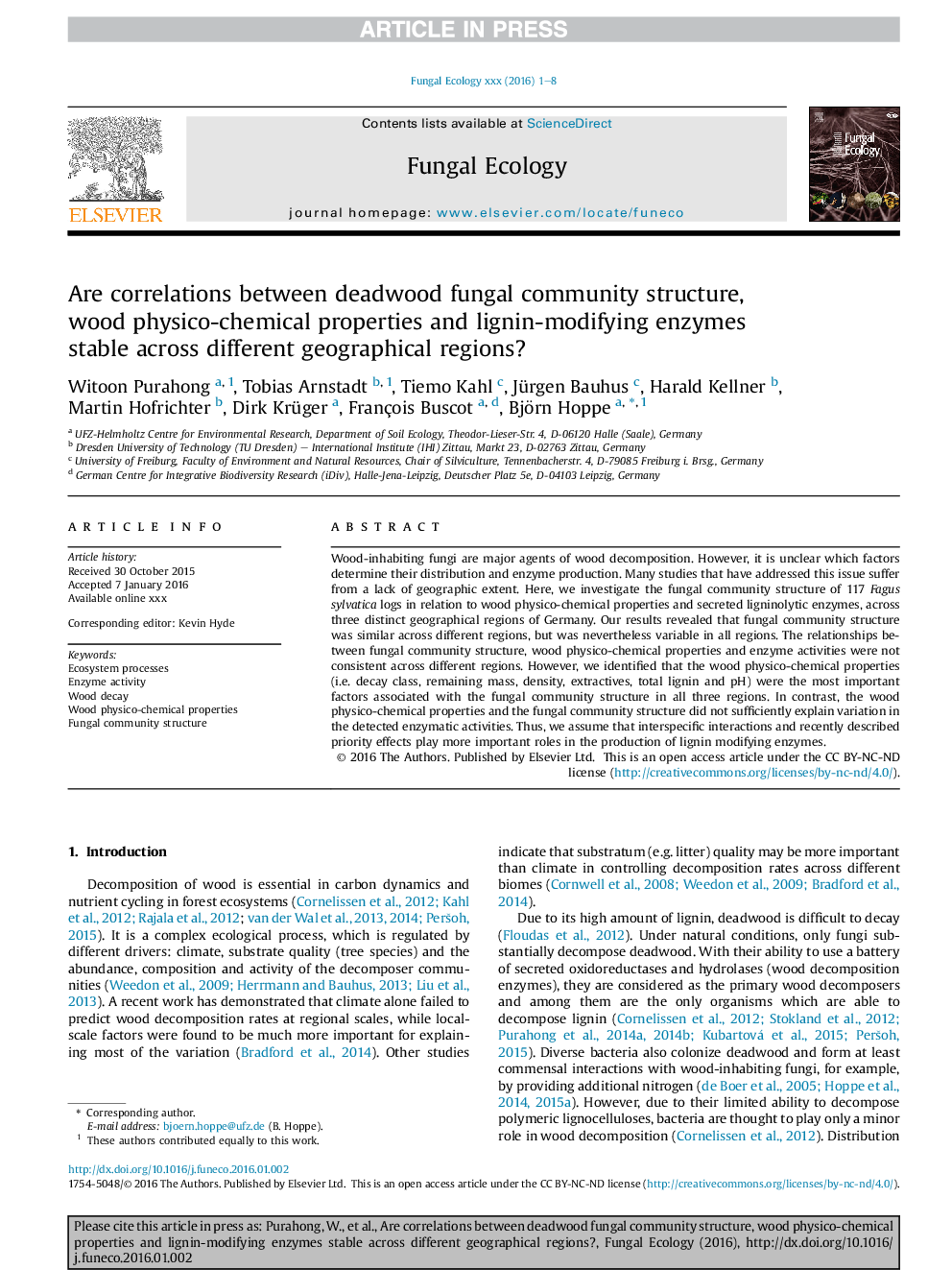| Article ID | Journal | Published Year | Pages | File Type |
|---|---|---|---|---|
| 8384386 | Fungal Ecology | 2016 | 8 Pages |
Abstract
Wood-inhabiting fungi are major agents of wood decomposition. However, it is unclear which factors determine their distribution and enzyme production. Many studies that have addressed this issue suffer from a lack of geographic extent. Here, we investigate the fungal community structure of 117 Fagus sylvatica logs in relation to wood physico-chemical properties and secreted ligninolytic enzymes, across three distinct geographical regions of Germany. Our results revealed that fungal community structure was similar across different regions, but was nevertheless variable in all regions. The relationships between fungal community structure, wood physico-chemical properties and enzyme activities were not consistent across different regions. However, we identified that the wood physico-chemical properties (i.e. decay class, remaining mass, density, extractives, total lignin and pH) were the most important factors associated with the fungal community structure in all three regions. In contrast, the wood physico-chemical properties and the fungal community structure did not sufficiently explain variation in the detected enzymatic activities. Thus, we assume that interspecific interactions and recently described priority effects play more important roles in the production of lignin modifying enzymes.
Related Topics
Life Sciences
Agricultural and Biological Sciences
Ecology, Evolution, Behavior and Systematics
Authors
Witoon Purahong, Tobias Arnstadt, Tiemo Kahl, Jürgen Bauhus, Harald Kellner, Martin Hofrichter, Dirk Krüger, François Buscot, Björn Hoppe,
